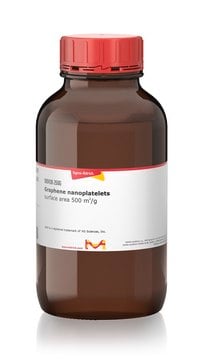637335
Gadolinium(III) oxide
nanopowder, <100 nm particle size (BET), 99.8% trace metals basis
Sinónimos:
Gadolinia, Gadolinium trioxide
About This Item
Productos recomendados
assay
99.8% trace metals basis
form
nanopowder
reaction suitability
reagent type: catalyst
core: gadolinium
particle size
<100 nm (BET)
mp
2330 °C (lit.)
density
7.407 g/mL at 20 °C (lit.)
SMILES string
O=[Gd]O[Gd]=O
InChI
1S/2Gd.3O
InChI key
RNYFGGMJZRTZKO-UHFFFAOYSA-N
¿Está buscando productos similares? Visita Guía de comparación de productos
Categorías relacionadas
signalword
Warning
hcodes
pcodes
Hazard Classifications
Eye Irrit. 2
Storage Class
11 - Combustible Solids
wgk_germany
WGK 1
flash_point_f
Not applicable
flash_point_c
Not applicable
ppe
Eyeshields, Gloves, type N95 (US)
Certificados de análisis (COA)
Busque Certificados de análisis (COA) introduciendo el número de lote del producto. Los números de lote se encuentran en la etiqueta del producto después de las palabras «Lot» o «Batch»
¿Ya tiene este producto?
Encuentre la documentación para los productos que ha comprado recientemente en la Biblioteca de documentos.
Los clientes también vieron
Artículos
Three approaches generate white light, including LED-based down-conversion for broader applications.
Magnetic materials find diverse applications from data storage to renewable energy.
Nuestro equipo de científicos tiene experiencia en todas las áreas de investigación: Ciencias de la vida, Ciencia de los materiales, Síntesis química, Cromatografía, Analítica y muchas otras.
Póngase en contacto con el Servicio técnico









